Maruti Suzuki Jimny review, first drive - Legacy builds the story
Let me get right to it, because the review for the Suzuki Jimny is ridiculously short. Let me start by taking you on a short ride through , specifically that of an epic motorsport event in India and a very dominant SUV that stamped its authority all over this race. The Raid De Himalaya was one of India's toughest rally raid events and this was one of my earliest introductions to motorsport in any form. Way back in 2001 I covered the event as a journalist, got swept off my feet by the grandeur of the Himalayas and the men and machines that tried to, often unsuccessfully, tame those mighty mountains.
I subsequently even raced in it, helped marshal it and fell in love with one of India's greatest sporting events. Keep in mind I was too young to have witnessed the Great Himalayan, by any measure an even more epic rally that took place in the Himalayas years before the Raid was conceived. So the Raid was my only tryst with the grandeur of a motoring event on some of the toughest terrain on the planet. People died in it, that is how tough it was.
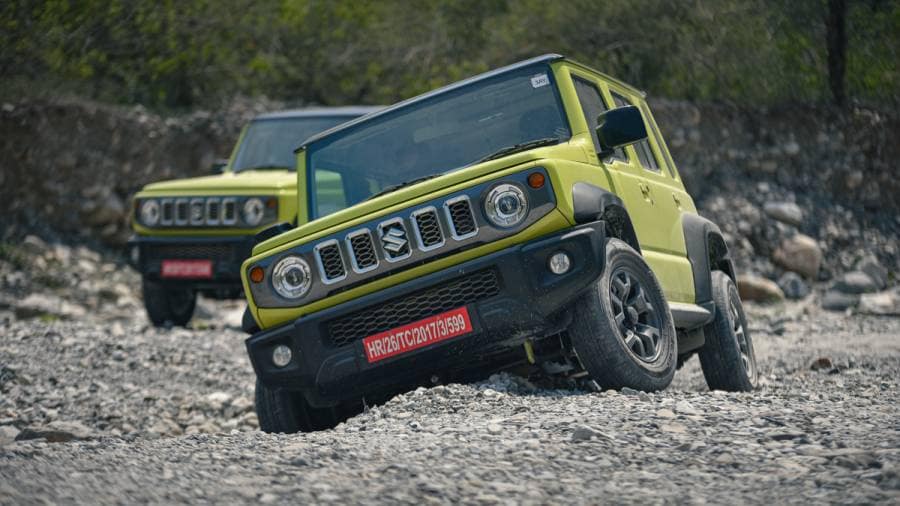
Maruti Suzuki Jimny: History
The one thing that stood out though was the number of Maruti Gypsy's that enrolled in the extreme rally category. Almost everyone who rallied between the late 80s through the 90s, across any terrain, did it in a Gypsy. They even raced them at the few circuits that existed in India back then. And it was madly successful across a variety of events. I still remember the likes of Along Aier, Sunny Sidhu, Suresh Rana, and Tsering Lhakpa charging across the Himalayas in their Gypsy's. Or even about N Leelalkrishnan, Hari Singh, and Farad Bhathena sweeping through special stages in their Gypsy's often made my hair stand on end. I'd often find myself looking for the best spots on the Raid, from where I could capture a few images of the Gypsy catching air as it flew through the special stages. For the longest time possible the Gypsy dominated every rally in the country.
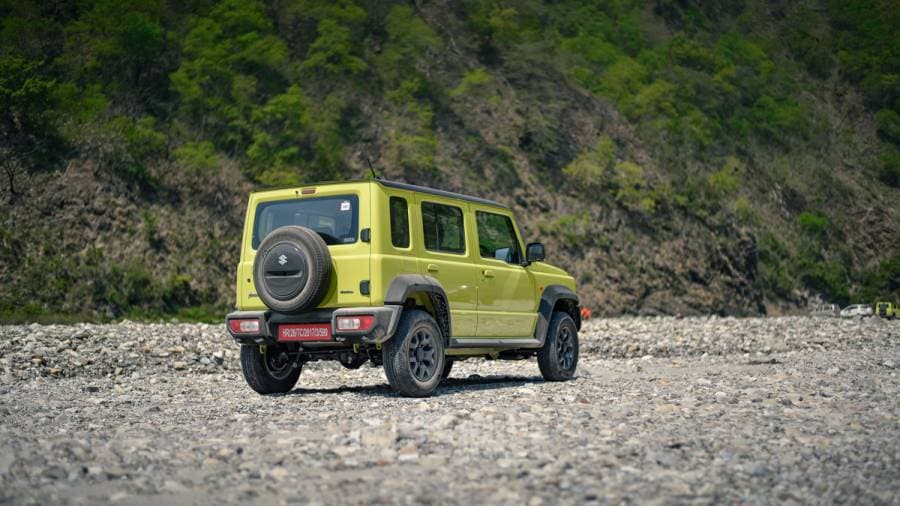
No other vehicle has come close to emulating the success of the Maruti Gypsy as the motorsport vehicle of choice for the champions of Indian rallying. It left an indelible mark in India's motorsport as the vehicle that could handle the toughest of conditions with the utmost ease. As a result, it also caught the fancy of adventurers who swore by the prowess of the Gypsy across any terrain. Even I got caught by the Gypsy bug, and I did spend enough time trapezing across India in a Gypsy. The Gypsy as urban legends go, could be placed right up there alongside Marlboro, it separated the men from the boys.
What the men did not tell you was that it was absolutely shit to drive on conventional roads. It was uncomfortable, it bounced around too much, the ride quality was rubbish, the handling of the stock vehicle was poor, the steering was vague, and the brakes... let's not go there anymore. On a trip, it was just awful. Back in the 90s and 2000s, the roads in the upper reaches of Ladakh were dreadful and driving a stock Gypsy across this terrain was sheer torture. Unless of course, you had a fully kitted-out charger, whose suspension would simply pulverise everything in its way.
Come across a shortcut as we still call it in Ladakh, which usually was a steep uphill dirt track full of loose shale, large rocks, and deadly drops on one side, connecting two points of a road, and the Gypsy would show what made it such an epic vehicle. The superb 4x4 drivetrain, coupled to the light kerb weight (back then this would have been no more than 1200 kilos) helped it skip gaily across any and all obstacles. There was hardly anything that caught the Gypsy on the wrong foot. It was mad fun when the going got rough... for all other occasions you were better off in anything else.
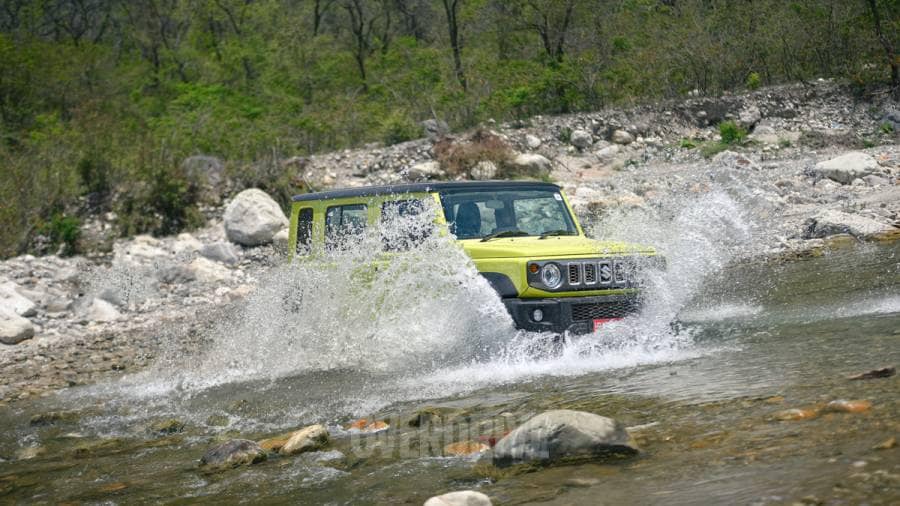
As a result, it wasn't a big commercial success, the largest consumers of the Gypsy were the armed forces, the forces, emergency services, and... motorsport and adventure buffs. Those consumers are one of the biggest reasons the Gypsy was in production for a very, very long time. As the roads across the nation got better, their network spread wider, it left fewer and fewer places where the Gypsy was useful. In fact, in our last outings in the Raid De Himalaya, we had already moved to the Esteem or the Alto because they were vastly more comfortable and there was hardly any terrain that challenged these 2WD vehicles. The Gypsy which was a fantastic specialty vehicle, for a short time in India's automotive history it even achieved cult status, could not meet emission requirements, had fewer and fewer places to be driven to, and there were vastly more comfortable off-roaders on offer to make the Gypsy relevant, so it just had to go. Along with it, anything that was as poorly equipped, rough off the edges, and uncompromising in its approach to motoring had to hang up its boots.
HOW HAS THE JIMNY EVOLVED
This makes it difficult for me to assess what the role of the Jimny ought to be now. Should it have taken a softer approach to motoring or retained the legendary hard off-road ability. The latter is what Suzuki went with. The new Jimny, like its predecessor, the Gypsy, fits into a very particular niche. That of an adaptable, easily repairable, reliable, nimble and adept off-roader. It is immensely fun when you do find a trail over which the Jimny is the boss of all things. The body-on-frame construction, full width solid rigid axles, brake limited slip differential, and low ratio transfer case coupled to the 1.2-ton kerb weight make it immensely enjoyable when the going gets rough. On our test track in the foothills of the Garhwal Himalayas, the Jimny was as good as a mountain goat, raring to go higher up into the mountains. It made every test track feel like a walk in a park. Any trail you throw at it, the Jimny will wade through effortlessly. The upright A-pillars, large glass areas and the extremely short overhangs make this a brilliant choice for off-road work.

That said, there are going to be a few challenges for the Jimny. The 1.5-litre naturally aspirated petrol with 104.8PS and just 134.2Nm is going to struggle a bit as the altitude rises. Up in the higher reaches of Ladakh, there are trails that stretch for kilometres, climbing up steeply till you join metaled roads. The Jimny is going to find the going a bit tough because its peak power and torque come in at a fairly steep 6000rpm and 4000rpm respectively. At 36.2:1, its crawl speed is not ideal (you need a numerically higher number), which means you are going to have to rev the nuts off this engine to get into the powerband and make progress when the going gets tough. This is going to stress the clutch. On our test drive, there were plenty of instance when you could smell the clutch, because those uninitiated to off-road driving were gassing it on half clutch with the transfer case set to 4-low. This is a recipe for disaster.
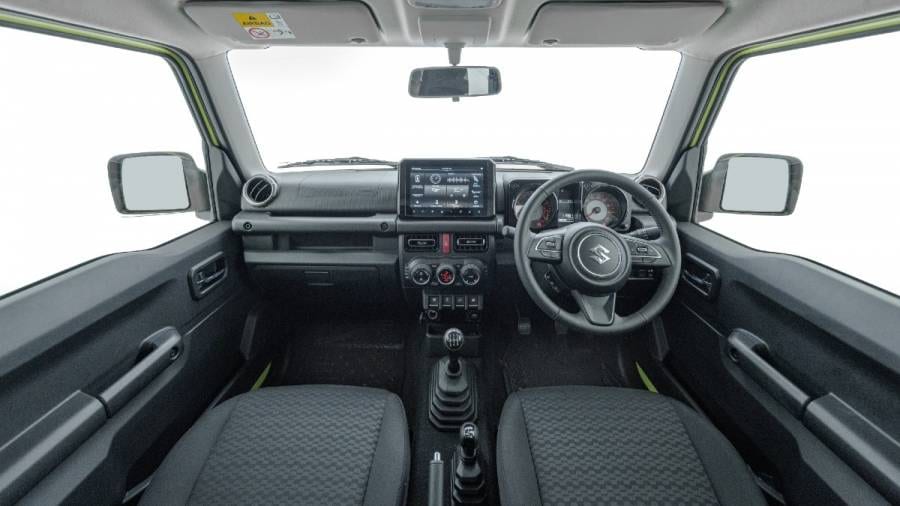
Here is where things can get a bit confusing. The Jimny comes with two transmission options, a 5-speed manual and a 4-speed automatic. The ideal choice for newbies should be the automatic because it makes off-roading simpler. You don't have to worry about managing the clutch, simply slip it into 4WD, 2nd gear or low ratio on the shifter and let the Jimny do its thing. You really aren't going to stress the clutch. In fact for a majority of the off-road exercises Maruti provided us with the automatic, because it is the simpler transmission to engage. But, on the road this 4-speed automatic feels woefully inadequate. Its roughness becomes apparent and so does its high revving, go nowhere near. The Jimny does not feel quick either with the automatic, the superb power to weight ratio though ensures fuel efficiency is respectable with Maruti claiming an overall efficiency of 16.39kmpl for the automatic. Just don't go comparing this to the conventional front wheel drive SUVs from Maruti which regularly clock significantly higher numbers.
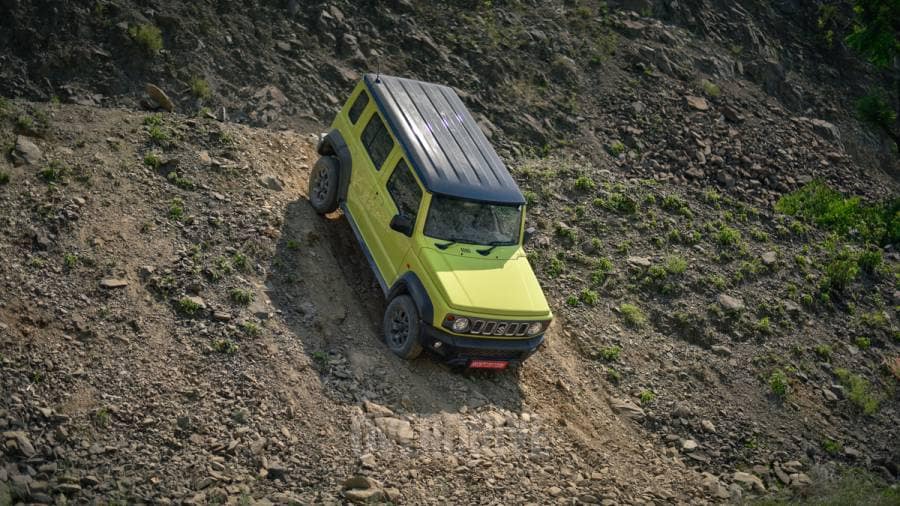
Now if you were a slightly more proficient off-roader with enough miles under your belt to know how to manage a 4x4 SUV, the manual would be your choice of transmission. It is also the better choice of transmission when driving the Jimny on-road. Yet the sect of people who know just how to operate a proper 4x4 SUV in all conditions, numbers in the few thousands. So my recommendation is that you learn how to use a low ratio transfer case equipped SUV before you actually buy one, and then use it, which means get outdoors and drive the Jimny. I still recall discussions in the OVERDRIVE offices over how many people actually used the off-road mode shifter. Most consumers simply left the Gypsy in 2WD and let the transfer case rot, I presume this would be the case in the Jimny too.
2023 Maruti Suzuki Jimny: Driving impressions
On the road the Jimny is, er...umm...okay. As admirable as it is off-road, when the Jimny finds tarmac, it also finds itself a little out of place. It's a comfortable SUV to drive, but its not a vehicle I would drive over long distances. The one debilitating factor is that the Jimny still isn't built for comfort. Yes, it is significantly more comfortable than the Gypsy, but there are better, more comfortable SUVs from Maruti if you spend a lot more time on the road. The body on frame construction brings with it a fair amount of body roll. Unlike the first-generation Gypsy which had serious rollover issues, and which forced Suzuki to come out with a wider track to broaden its footprint, the Jimny is surer, more confident. The wheelbase, and front and rear track have all grown significantly increasing the Jimny's footprint. As an urban SUV the Jimny will be a fun to drive companion, for the long haul, I'd reserve judgement for when I do get an opportunity to drive it for hours on end because something tells me it isn't built for those extended overland trips.
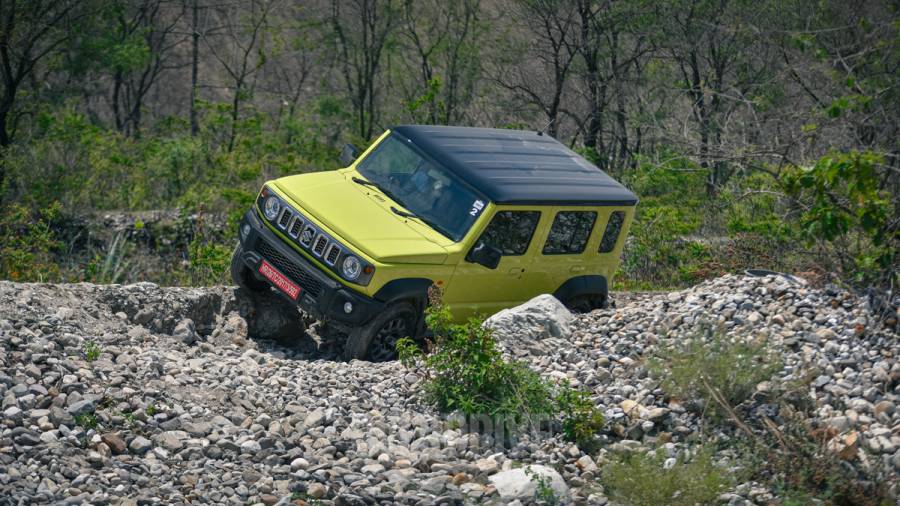
The steering for instance isn't tuned for on-road performance... for crying out loud, it has a steering damper to dampen off-road shocks to the steering. It's small things like these that tell me the Jimny is a great afternoon out with the boys in the slush kind of vehicle, not exactly the lets take the family out for that road trip across the seven sisters kind of SUV. It has the interior space, 5-doors orient it towards providing space for at least 4 occupants in enough comfort, headroom is impressive. Practicality within the cabin however is poor, but there is enough boot space for a weekends worth of luggage for four. Longer journeys, more luggage, and you'd have to get a roof rack.
2023 Maruti Suzuki Jimny: Design
Coming to how it looks, opens up a whole new can of worms. We found a Thar wandering around the same location we were driving the Jimny at. Placed side by side, the Jimny falters. It just does not have the oomph and the sex appeal of the Thar. Where the Thar has that aura of being the outdoorsy SUV for men with hair on their chest, the Jimny comes across as the SUV for the metrosexual. The guy who will carry along his hand moisturizer, nail filer, face pack and hair gel to the campsite. Interestingly, and I don't mean to be sexist here, but the bulk of enquiries about the Jimny that came my way, came from women I know. Women who love a good adventure, have no hang ups getting their nails dirty, and hair frazzled. This is just the aura that the Jimny dispels. The reality I suspect is that if you're the one buying the Jimny, you're also the kind who does not need to bare your chest to display foliage!
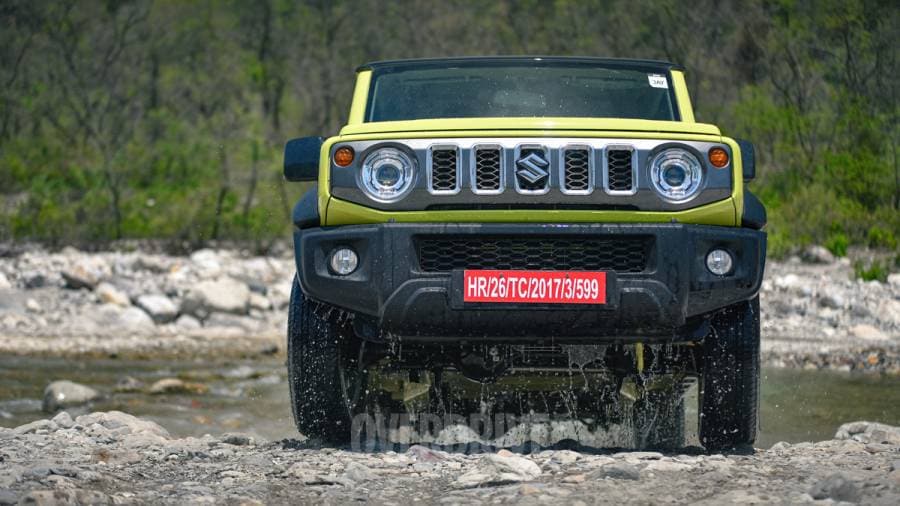
In fact I did learn on the Jimny drive that a few of the instructors had booked the Jimny. Likewise, Maruti claimed that several overland tour operators, 4x4 enthusiasts were also some of the early adopters of the Jimny. These guys maybe stuck in a time loop, and for years they yearned to drive a better version of the Gypsy, and when it has finally come along, they've jumped onto the nostalgia bandwagon. But they also know that the Jimny will take them further, higher, deeper than any other SUV at more affordable prices, and reliably too.
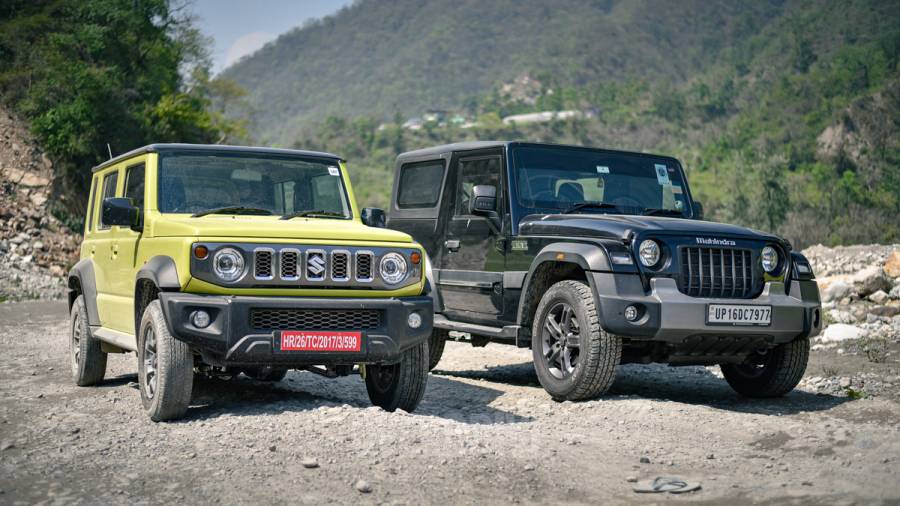
2023 Maruti Suzuki Jimny: Verdict
So should you jump onto that bandwagon too. Absolutely, if you do believe that you have the time and inclination to do those quick morning off-road experiences, the Jimny is just the thing you need. But, what I also believe is that India has grown smaller, geographically. Our nation prides itself on building world class roads in difficult to reach places, and its true. Ladakh, Uttarakhand, Northeast India is no longer the domain of the hardy adventure seeking enthusiast who has Marvin Gaye's 'Aint no mountain high enough' as their ringtone. Today the roads of Ladakh are good enough to be driven on by supercars. Arunachal Pradesh too for instance, has some of the most incredible roads in the country, with kilometres long bridges spanning the mighty Brahmaputra. The road going up to Umling La, the highest motorable road in the world has tarmac the quality of what you'd get in Netherlands, Switzerland or Austria! In the deserts of Rajasthan, innovative farming techniques have left just a few patches of sand you can drive across without disturbing a villager's fields.
This is why I feel Maruti is several years late getting the Jimny to market. The way the country is shaping up, there is less utility for the Jimny, and neither does it have the poser value like its competitor does. I fear the Jimny will hit its plateau soon, and then all that might keep the Jimny alive will be defense and law enforcement procurement. There too I believe needs have changed. Most law enforcement vehicles in several states are now the Ertiga and the Innova. This could leave fewer opportunities for the Jimny to capitalize on.
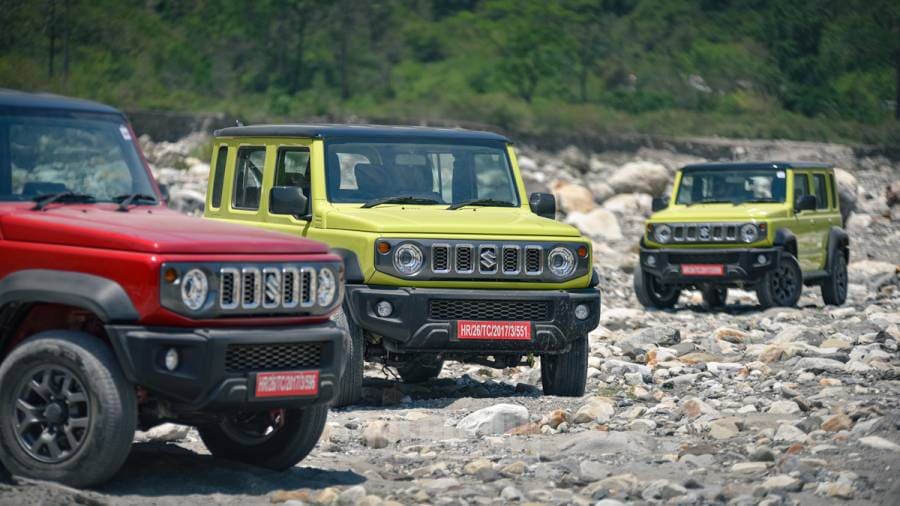
The Jimny then makes a strong case as a 2nd or 3nd vehicle in the family. It is the scratch to your 40-year-old itch, your midlife crisis, you yearning for your glory days purchase. For everything else, Maruti has a wider and better portfolio of SUVs, including the Grand Vitara which is not just significantly more comfortable but also has an AWD option for the mild off-road conditions, and much better efficiency in the hybrid. As for the efficiency of the Jimny, Maruti claims a little over 16kmpl for the Jimny. I feel this will drop down, significantly in real world conditions. Off-road you would barely, if at all, see anything above 10kmpl at best. Overall if you can get an average of around 12kmpl, that would be fantastic.
As to the price, I have a feeling the 4x4 drivetrain will have a higher price entry point, though post that, it could be a very affordable 4x4 SUV to live with.
Also Read:
Maruti Suzuki Jimny to be introduced in India on June 7
-NA-
1497cc
Manual
102
130
-NA-
-NA-
1248cc
Manual
-NA-
200
24.3 Kmpl













